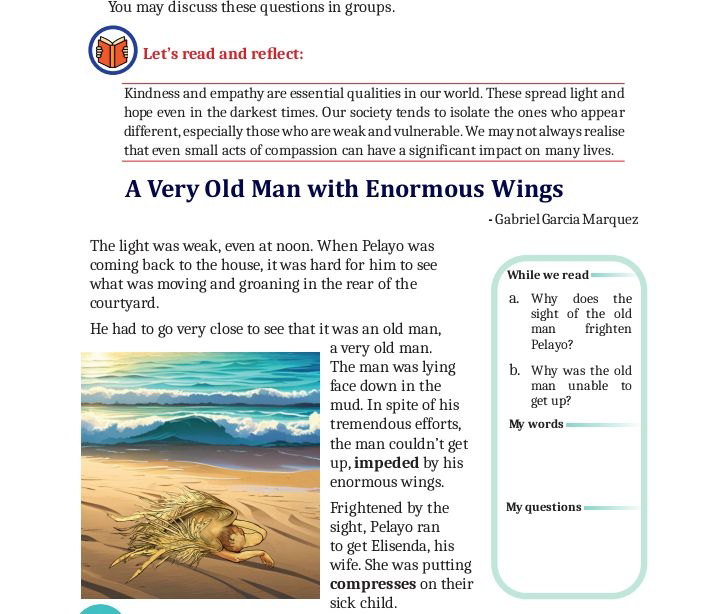Disasters and Disaster management in India
1. What does the recent World Disaster Report say about disasters?
The recent World Disaster Report says that disasters have increased in their number and intensity.
2. What are some of the common disasters?
Some of the common disasters are earthquakes, floods, cyclones, landslides, droughts, accidents, plane crashes and forest fires.
3. What is true about both developed and developing countries?
The fact that disasters like earthquakes, floods, cyclones, landslides, droughts, accidents, plane crashes and forest fires have increased in their number and intensity is true about both developed and developing countries.
4. What is the relationship between human development and disaster preparedness?
There is a direct correlation between human development and better preparedness to manage disasters. The less developed countries are more prone to suffer damages caused by disasters.
5. Which is the deadliest disaster?
The deadliest disaster is drought. It accounts for 48% of deaths due to natural disasters.
6. What makes India more vulnerable do disasters?
Its geographical location and geological formation make India more vulnerable to disasters. Its long coastline, snow-covered peaks and high mountain ranges and the perennial rivers of the north combine to make the problems worse. India has only 2% of the total geographical area, but it supports 18% of the total population. So, there is a great pressure on the natural resources. This directly or indirectly leads to disasters like floods, droughts, landslides and earthquakes.
7. What causes tremendous pressure on the natural resources in India?
India has only 2% of the total geographical area, but it supports 18% of the total population. This causes a tremendous pressure on the natural resources.
8. Which is a relatively new natural disaster in India?
Tsunami is a relatively new natural disaster in India. Due to the lack of an adequate warning system, the tsunami of 2004 destroyed a large portion of the coastal regions of Tamil Nadu, Kerala, Andhra Pradesh and also the Andaman and Nicobar Islands. It killed many people and destroyed properties worth many crores.
9. Which is the man-made disaster that India witnessed in the last century?
The man-made disaster that India witnessed in the last century is the Bhopal Gas Tragedy of 1984.
10. Name some of the major natural disasters faced by India during this century.
Some of the major natural disasters faced by India during this century are: The Gujarat earthquake (2001), the Mumbai-Gujarat floods (2005), the tsunami (2004), the Uttarakhand flash-floods and the hurricane Phailin in coastal Orissa and Andhra Pradesh (2013).
11. Which are the lifeline support systems that get damaged in disasters?
The lifeline support systems that get damaged in disasters are communication, power supply and water supply systems. Drainages get are damaged. Healthcare and hospitals come under severe stress. Commercial and economic activities are badly affected. Life, then, almost comes to a standstill.
12. Which is the man-made disaster mentioned here? Which section of the society is most affected by disasters? Why?
The man-made disaster mentioned here is riots. The most affected are the poor sections of society. It is so because they have to work daily to earn their livelihood.
13. What are the major limitations in constructing safe and secure buildings?
The major limitations in constructing safe and secure buildings are people don’t follow the regulations laid down for ensuring safety and security. In developing countries, only 30% of the buildings are constructed in accordance with the regulations. The lack of a master-plan and the inferior quality of materials used for construction are also major limitations.
14. What measures need to be taken to ensure the safety and security of the buildings?
To ensure the safety and security of the buildings, both private and public buildings should be constructed according to the guidelines prescribed by law. Construction should be according to the master plan approved by the authorities. Good quality materials should be used for construction.
15. What is the requirement in the areas vulnerable to earthquakes in order to reduce damage and death?
In areas vulnerable to earthquakes, the existing buildings should be technically assessed and owners should be informed about the weaknesses in their construction. It is estimated that nearly a million buildings are constructed in India each year and an equal number of them gets damaged as a result of disasters. To reduce the damage to buildings, a monitoring mechanism should be set up. It should work in proper coordination with the concerned authorities to ensure the fulfilment of building codes.
16. What is the structure of the state and central level committees of disaster management?
At the state level there is a State Level Disaster Management Committee consisting of the senior secretaries of various departments and the representatives of NGOs. At the national level, there is a Crisis Management Committee, headed by the Cabinet Secretary and the secretaries from the major departments of the government.
17. How does the central government coordinate disaster management activities in India?
The central government, with proper coordination with various ministries, give the necessary support to the states. This includes defence services like air dropping, rescuing, searching, transport of relief goods, etc. and availability of railway and ferry services, health personnel and medical support.
18. What are the special requirements of the rescue team, according to the author?
The rescue teams should have special skills and attitudes in dealing with disasters. They need to be well equipped and should have the latest technologies.
19. What is the purpose of disaster management?
The purpose of disaster management is to reduce the destructive impact of disasters. It is not possible to prevent or avert many of these disasters but with proper disaster management, we can definitely reduce the deaths and damages caused by them.
Activity – III (Think and respond)
Question 3.
What are some of the disasters (natural/man-made and industrial) your locality has witnessed in the last ten years? What were the impact of these disasters on man and nature?
Answer:
My locality has witnessed two major disasters. Bothe of them are man-made. One is water pollution. The local farmers, in their eagernare to get bumper harvests, used a lot of chemical rertilizers and later insecticides on a large scale. Ttoe result is that the water in the area is polluted. The fish in the stream and ponds nearby have died.
Another disaster is the mindless cutting down of trees and building concrete jungles everywhere. With high- rise buildings around you, you feel choked. There is no place for the children to run about and play. Every available piece of land is used for various types of construction. In the summer season the place becomes very hot. All the birds that nestled on the trees around have left the place, which looks barren.
Question 4.
Is your locality prepared to manage any potential disaster? If not, what precautions can be taken to prevent and manage possible disasters?
Answer:
My locality is not at all prepared to manage any potential danger. The streets are so narrow in the township that not even a fire-truck can enter the place in case of a fire disaster. At least the Municipality should take steps to widen the roads so that the victims can be reached in case of a disaster.
Question 5.
The author says that disaster management in India is the responsibility of the state and central governments. Do you agree with this view? Do you think that the people of our country have a role in preventing and managing disasters?
Answer:
I don’t agree with The view of the author that that disaster management in India is the responsibility of the state and central governments. I fully agree with the view that the people of our country should have a role in preventing and managing disasters. Preventing natural disasters may not be possible but we can do many things to reduce the impact of such disasters. Without the people’s active cooperation, no scheme of any kind will succeed.
Question 6.
What do you think about the measures of rehabilitation that are adopted after each disaster? Do you think the measures are sufficient?
Answer:
The measures of rehabilitation that are adopted after each disaster are not good enough. When a disaster happens, the chief ministers and some other ministers run to the spot of disaster. Some half-hearted measures are carried out just to please the people. Often these measures are just temporary solutions. After the tsunami, some houses were constructed to rehabilitate the victims. After two seasons of heavy rain most of the houses became so bad people could not live there. The measures taken are insufficient. Corruption is the main cause for our troubles. The contractors who make the buildings use defective material and the buildings they make do not last. We have seen what happens to our roads. There is no determined effort on the part of anybody to make things work properly. Authorities become immune to criticism.



Comments
Post a Comment
Please share your feedback and questions